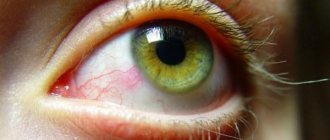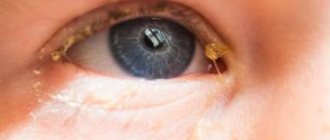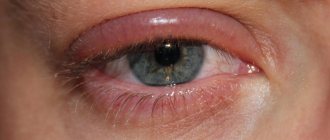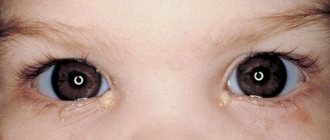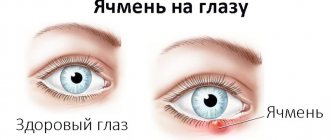Swelling with sinusitis is a normal condition with inflammation of the maxillary sinuses. However, you need to understand how to remove it.
We can say that edema is the most common and characteristic symptom of sinusitis.
If we consider the nasal mucosa as a kind of barrier that prevents the penetration of pathogens, then swelling only enhances the function of the barrier.
The symptom should be considered as a direct indication that inflammation caused by infection has begun in the sinuses.
If the swelling spreads further and affects the face and eye area, then this already indicates the consequences of sinusitis in general and serious inflammation.
Let’s immediately make a reservation that simply removing swelling does not mean curing the disease itself, because only the symptom will be relieved.
In other words, if you remove inflammation from the maxillary sinuses and cure the disease, then the swelling will also go away.
Swelling of the mucous membrane as a symptom of sinusitis
Inflammation of the maxillary sinuses is accompanied by symptoms such as:
- nasal congestion;
- absence or difficulty of nasal breathing;
- copious purulent or serous discharge from the nasal cavity;
- frequent sneezing;
- distortion of voice coloring;
- headache.
With prolonged progression of sinusitis, swelling of the soft tissues of the face appears on one or both sides, depending on the damage to the sinuses.
Facial swelling affects not only the cheek area, but also extends to the eye sockets and upper jaws. If sinusitis is not treated, swelling can lead to complications.
Bags will appear under the eyes, which will put pressure on the organ of vision. Intraocular pressure will increase, and the patient will start to cry for no reason. At the site of swelling, the skin will turn red due to inflammation. The danger is the penetration of excess purulent fluid into the upper jaw, which will begin to become inflamed.
Swelling can spread to the larynx and middle ear. Pathogenic microorganisms, penetrating into tissues along with fluid, also affect the blood. Hence the development of sepsis and meningitis.
Associated symptoms
The disease develops against the background of frequent headaches.
When swelling occurs due to pathology, the affected area gradually expands. Swelling can spread to the periocular area, and a reddened swelling appears. Sinusitis is accompanied by accompanying symptoms:
- increased breathing as the airways narrow;
- change in voice timbre;
- pain in the swollen area;
- prolonged runny nose;
- swelling and redness of the eyelids;
- hyperthermia;
- formation of pus in the maxillary sinuses;
- headache.
If there is an increase in the size of the maxillary sinuses, an increase in intraocular pressure occurs. When the eyelid is swollen, the pain can be transmitted to the ears, eyes, and teeth. Since the tear ducts of the organs of vision are compressed, the eye waters even more. As a result, blood flow increases, causing the swollen area to turn red. This reaction is a sign of the human body’s fight against an emerging infection.
The most noticeable swelling under the eyes is after a night's sleep. The more the eyes swell with sinusitis, the more complex the pathological condition. Therefore, if symptoms increase, immediate consultation with an otolaryngologist is necessary. If proper timely treatment is not carried out, acute sinusitis can become chronic. At the same time, the symptoms decrease - the swelling subsides a little, the eye hurts less, but pus can be released from the nose for a long time. To eliminate swelling during sinusitis, you need to eliminate the cause of the disease, and then carry out symptomatic therapy.
Why is it necessary to relieve swelling during sinusitis?
The maxillary or maxillary sinus is one of the paired sinuses of the nose, which are located on the sides of its wings and communicate with its cavity through a narrow nasal passage or anastomosis. With the help of this small opening, a subtle relationship is established between the sinus cavity and the nasal cavity and the environment. One of the main functions of the anastomosis is the outflow of fluid and mucus from the closed sinus cavity.
In the edematous form of inflammation, the swollen mucosa mechanically blocks the narrow anastomosis, and the sinus cavity with the inflammation growing in it remains completely closed. The exudate or inflammatory fluid formed during inflammation cannot leave the sinus cavity.
Why is this dangerous?
- The increasing volume of fluid mechanically irritates the walls of the sinus, causing severe headaches.
- Inflammatory fluid, deprived of outflow in a closed cavity, is an ideal environment for the proliferation of bacteria. This is how the main complication arises – purulent sinusitis.
- With further proliferation of bacteria and an increase in pressure in the sinus cavity, there is a high risk of breakthrough of purulent contents into neighboring organs and tissues: the eye, meninges, upper jaw teeth, palate, pharynx.
Thus, treatment of edema and release of the sinus excretory duct is one of the main tasks in the fight against sinusitis.
Swelling under the eye due to sinusitis
The procedure will help get rid of dangerous purulent mucous accumulations. While rinsing the nasal cavity, the patient should lie on his side. A small dose of medication is poured into the “lower” nostril. This helps the medicine penetrate the sinus. To ensure the necessary outflow of fluid, vasoconstrictor drops are dripped into the nasal cavity. Their use helps accelerate the removal of pus. An effect is observed when using the following vasoconstrictor drops:
Non-steroidal inflammatory drugs are used to treat sinusitis. They help relieve symptoms of the inflammatory process, lower body temperature, and eliminate swelling. These include the following medicines:
Antihistamines are also used. They eliminate puffiness under the eyes and reduce intoxication. The following medications are effective:
Physiotherapy is used after an exacerbation with elevated temperature has been eliminated. Treatment methods:
Particularly difficult situations are treated with surgical intervention. The doctor makes a puncture - pierces the sinuses. After some time, these cavities are cleaned using drainage and washed with antiseptic agents. This method is the most traumatic. When using it, there is no guarantee that the problem will be completely eliminated. In the chronic stage of sinusitis, such punctures are performed regularly, and they do not heal the tissue.
Sinusitis is one of the dangerous diseases that causes severe pain. Moreover, their localization is varied. So, they describe that with sinusitis the eyes hurt. But most people underestimate this sign. And that's wrong. The eyeballs are located next to the maxillary cavities of the nose, so the consequences of pathological processes in the latter cause unexpected results in the former. Eye fatigue and swelling are one of the initial signs of pathology of the visual organs in the disease. Eye problems are a complication of sinusitis.
Painful sensations in the eye area due to inflammation and purulent processes in the nose are varied. They can be pressing, pulsating, cutting . They can manifest themselves in different ways: either in the form of pain alone, or as swelling and bruising under the eyes.
The pain in this case is pressing. There are also other options:
- dull and aching;
- painful and exhausting, which radiates to the temporal region;
- shooting, which changes its intensity.
Inflammation developing in the maxillary sinuses causes increased pressure in the eyes. A reaction develops from the nerve endings. Most often, doctors talk about unpleasant sensations in the area of the organs of vision, above the eyebrows. When coughing, the pain becomes sharp and painful.
Swelling may also develop. It is accompanied by bruises . This complication is explained simply - due to the active functioning of the immune system, increased blood flow is directed to the organ suffering from infection. Therefore, the sclera of the eyes and the hyperiminated (reddened) skin of the lower eyelids turn red, and vascular overload begins.
Swelling of the mucous membranes of the nasal sinuses begins to spread to the surrounding tissues - if it forms in the depression under the eyes, called the canine fossa, bags appear here. Doctors call such symptoms clear and characteristic signs of sinusitis.
At the same time, if there are symptoms such as hoarseness, nasal discharge, problems with smell and headaches, then the patient is sent for an x-ray to confirm the diagnosis.
Find out how to identify sinusitis in an image here.
Conjunctivitis may develop against the background of sinusitis. Also, inflammation of the organs of vision becomes a consequence of an ENT disease and its complication. Inflammation of the mucous membrane of the eye is caused by the fact that the infection quickly spread through the bloodstream to the area of the eyeball. Since the organs are located in close proximity, pathological processes in them occur almost instantly. When purulent inflammation forms in the sinuses, the situation worsens.
Why is a CT scan of the maxillary sinuses prescribed for sinusitis? This material will tell you.
With conjunctivitis, no matter what its nature, the eyes begin to itch and water. This is due to increased pressure on the organs of vision and surrounding tissues due to swelling of the skin against the background of inflammation, and to the fact that the infection, including purulent infection, moves to the eye area. Itching begins due to the development of an allergic reaction and an infectious pathogen.
Redness is caused by the acceleration of blood flow to quickly relieve the inflammatory process, and by swelling, when the tissues expand in size and turn red, and by the influence of the pathogen. This symptom is called nonspecific.
Symptoms of sinusitis without fever in adults are outlined here.
Sinusitis is a disease that occurs with pus collecting in the sinuses. The organs of vision also suffer. With the blood flow, pus moves at high speed and enters the mucous membranes of the eye. They become inflamed, the infection passes into the lacrimal sac and produces pus in the eye.
There are also more serious complications from ENT pathologies associated with the eyes. The situation is complicated by the fact that bumps and tumors appear, nerves become inflamed and abscesses appear on the skin of the eyelids. All these are serious consequences that lead to long and complex treatment .
Causes of edema
Inflammation of the maxillary sinuses is edematous if:
- the ciliated epithelium of the nose ceases to perform its functions due to sudden hypothermia;
- allergens and medications increase secretion;
- the outflow of fluid is difficult due to sinusitis;
- the whole body is poisoned.
If the swelling of the mucous membrane is not removed, then the multiplied bacteria from the nasal cavity will begin to spread to the vital organs of a person.
Nasal rinsing
One of the effective methods for relieving swelling during sinusitis is rinsing the nose.
Benefits of rinsing:
- Washing out mucus from the maxillary sinuses;
- Preventing the spread of infection;
- Removing swelling of the mucous membrane;
- Restoring breathing.
The washing procedure can be done without leaving home or in a hospital setting.
- Rinsing the nasal cavity at home. To carry out the procedure, you need to take a large syringe without a needle and fill it with a medicinal solution. Then, the person leans over the bathtub and places the syringe into one nostril. Under pressure, the liquid washes out the nasal cavity and flows out of the opposite nasal opening.
- Washing on the “cuckoo” apparatus. This method is more effective for sinusitis compared to a home procedure. Medicine is supplied into one nasal passage, and from the other, under pressure, it is sucked out along with stagnant mucus and pus. Usually five sessions are enough to relieve swelling and eliminate the symptoms of the disease.
Rinsing preparations can be purchased at the pharmacy or prepared independently.
Nasal cleaners:
- Saline solution. The simplest remedy for relieving swelling in sinusitis is a saline solution. To prepare it, you need to stir a tablespoon of salt in a glass of boiled water. Regular salt can be replaced with sea salt, and if desired, you can add a couple of drops of iodine to the solution. (warming the nose with salt)
- Solutions based on Chlorhexidine, Furacilin, Dioxidine will help clear the nasal cavity of mucus and relieve swelling.
How to fight
The appearance of fever, pain in the eyes and other accompanying symptoms during sinusitis indicate that sinusitis has long passed into an advanced stage and is destroying the body. Therefore, therapy must be started immediately. First of all, it should be aimed at the source of the problem, i.e. inflammation of the maxillary sinuses and removal of pus from them, if there is any.
Symptomatic therapy should also be connected in parallel in order to quickly cope with signs of complications and prevent further imbalance of the body. There are many remedies to help cope with pain in the organs of vision due to sinusitis.
Relieve swelling
To eliminate tissue swelling, it is usually recommended to use ointments. Pharmacy options are based on a gel base. These are comfortable and convenient to apply. Ointments for swollen eyes have several options:
- relieve inflammatory processes;
- have an antithrombic effect;
- reduce pain;
- eliminate swelling;
- increase the strength of capillaries;
- increase the tone of the muscles of the veins;
- improve blood flow locally;
- stimulate metabolic processes in tissues;
- have an antibacterial effect.
This article will tell you what a blood test shows for sinusitis.
The active components of ointments are quickly released and penetrate into the deep layers of the skin. A pronounced effect can be noticed within half an hour to an hour after applying the product . Among the main drugs that are used for therapeutic purposes to eliminate eye swelling are:
- Afulim;
- Bezornil;
- Troxevasin;
- Hepatrombin;
- Lyoton;
- Relief;
- Curiosin;
- Heparin ointment;
- Hydrocortisone ointment.
The doctor should offer one or another option, because the drugs have certain contraindications, and only a specialist can correctly evaluate them. The course of therapy is usually several days.
Treatment of conjunctivitis
Developed conjunctivitis is treated individually, depending on the patient’s age, history of diseases, gender, etc. Basically, these are general strengthening agents that support local immunity. The prescriptions also include antiviral and antibacterial drugs - it all depends on the pathogen. They may also offer rinsing with an antiseptic.
All information about exudative sinusitis is described at this link.
Among the drugs used for therapy are:
- Tsipromed;
- Albucid;
- Okomistin;
- Tobrex;
- Phloximed;
- Levomecitin and other options.
It is also recommended to use Tetracycline ointment, which should be placed on cotton wool under the eyelids at night. You can rinse your eyes with Chlorhexidine or Miramistin. The course lasts several days.
Remove the pain
Drugs in the form of drops will help relieve pain. Moreover, these should be products for the eyes, as well as vasoconstrictor drugs for the nasal cavity. The latter will restore ventilation of the nasal passages and reduce pressure and swelling.
In the first case, the drops will be the same as for the treatment of conjunctivitis. In the second, they are usually prescribed to restore breathing:
They can be used for no more than 7 days and as prescribed by a doctor. They are a must in the treatment of sinusitis.
How to relieve swelling using traditional medicine?
Therapeutic measures developed by otolaryngologists will help eliminate foci of inflammation and swelling of the face due to sinusitis. At the first stages of development of symptoms of inflammation of the sinus cavities, medications are prescribed:
- The leading position is occupied by the use of antibiotics, because they are able to relieve the symptoms of inflammation within a day. Of the drugs for sinusitis, Erythromycin, Azithromycin, Augmentin, Ceftriaxone are considered the best.
- Against inflammation and elevated body temperature, the use of Ibuprofen is optimal. The effect of the suspension and tablets occurs half an hour after administration and reaches a maximum after three hours.
See also
Is it possible to cure sinusitis (sinusitis) without antibiotics and how to do it
Read
- If swelling of the mucous membrane appears as a result of allergies, then antihistamines cannot be avoided. The doctor will tell you what to choose for treatment: Suprastin or Tavegil, Claritin. All remedies are effective in combating swelling and inflammation.
- Vasoconstrictor drugs have their place in sinusitis. Popular nasal drops and sprays include Nazivin and Xylometazoline. By having a spasmodic effect on the blood vessels of the nose, the drugs reduce the formation of secretions. At the same time, swelling is relieved. But treatment with drugs lasts only three to five days. Then stop nasal instillation in order to maintain normal mucosal function.
- For complex forms of sinusitis, treatment cannot be done without hormonal drugs - glucocorticosteroids. They are prescribed in the form of ointments, tablets, and sprays. The action of the drugs is aimed at reducing the amount of exudate. Penetrating into the nasal cavity, the components of corticosteroids cleanse the sinuses and help relieve swelling of the nasal mucosa.
Physical methods of treatment are also included in the complex of therapy for edematous sinusitis.
Patients with sinus inflammation are treated:
- ultrasound, characterized by a pronounced analgesic effect and removal of inflammatory products;
- electrophoresis with the introduction into the nostrils or through the skin of solutions of Novocaine or Hydrocortisone;
- mud applications on the inflamed area of the face;
- warming procedures using paraffin;
- impulsive currents, or diadynamic therapy.
The combination of physical and medicinal drugs gives a positive result in the treatment of sinusitis.
In extreme cases, radical methods of therapy are resorted to. The maxillary sinuses are punctured, bringing out the accumulated secretions.
How to relieve pain?
Without treating the underlying disease, you will not be able to get rid of pain and swelling of the eyes. But with the help of medicines you can significantly alleviate the patient’s condition:
- Analgesics in the form of eye drops will help relieve pain.
- Special ointments that are applied to the lower eyelid will help relieve swelling.
- Non-steroidal anti-inflammatory eye medications, which also have an analgesic effect, will help eliminate redness of the eyes and eyelids.
To reduce the intensity of pain, it is advisable to reduce eye strain: do not sit at the computer or watch TV.
Why does swelling occur with sinusitis?
Tissue swelling is an indispensable condition of any inflammatory process. Sinusitis or inflammation of the mucous membranes of the nose and its maxillary paranasal sinuses is no exception. Swelling or soaking of tissues with interstitial fluid occurs due to damage to epithelial cells and underlying capillaries. A damaged vascular wall freely allows fluid to enter the cells and intercellular space, causing them to swell.
Sinusitis can be:
- Allergic.
- Viral.
- Bacterial.
- Associated with the presence of foreign bodies in the sinus: dust particles, polypous growths and others.
With any of these sinusitis there will be swelling of the nasal and sinus mucosa. Sometimes the process is so intense that swelling occurs not only in the mucous membranes of the respiratory tract, but also in the external soft tissues. For example, swelling and swelling of the face with sinusitis are one of the typical manifestations of the disease.
Treatment with folk remedies
The goal of traditional medicine in the treatment of sinusitis is to cleanse the mucous membrane of bacterial secretions and remove purulent fluid as a spreader of infection. The sinus and its mucous membrane will return to normal if:
- rinse your nose with saline solutions or herbal infusions - chamomile, calendula, sage;
- carry out inhalations with the addition of soda, a few drops of fir oil, eucalyptus;
- instill aloe juice, Kalanchoe, oil mixed with garlic or onion juice into the nose;
- draw a grid on your feet with iodine and put on woolen socks at night;
- warm up the paranasal sinuses by applying bags of heated salt and millet.
See also
Is it possible for an adult to go to the bathhouse and take a steam bath with sinusitis?
Read
Home procedures will help when sinusitis is at an acute stage of development and a bacterial infection has not yet appeared. It is more difficult to treat sinusitis if the secretion has suppurated. And here, without antibiotics, the infection cannot be suppressed.
Prevention
To prevent the development of sinusitis, you need to carefully monitor your health.
Prevention measures:
- Strengthen immunity;
- Treat a runny nose in a timely manner, do not let it get worse;
- If possible, avoid contact with people suffering from viral diseases;
- Walk outdoors more often;
- Ventilate the room more often and do wet cleaning.
If sinusitis cannot be avoided, timely and correct treatment will prevent the development of a chronic form of the disease.
The first signs of inflammation of the maxillary sinuses
An alarming phenomenon indicating a complication is the prolonged manifestation of nasal congestion for more than 10 days. This occurs against the background of a lack of mucus secretion from the nasal passages with pressure exerted in the sinuses. Stagnation provokes discomfort, pain and creates conditions for the development of bacteria. The inflammation gradually turns into a purulent form.
Excessive mucus discharge will not be the best thing. It is important to pay attention to its color. If it is white or transparent, then the cause of inflammation is an allergy or the action of viruses. A green or yellow tint to the discharge indicates a bacterial nature. As the inflammatory process continues, swelling in the paranasal sinuses leads to active formation of pus. You should also consult a doctor if blood clots appear in your nasal discharge.
Swelling and inflammation are indicated by:
- difficulty breathing through the nasal passages;
- feeling that the nasal cavity is stuffy;
- soreness in the area of the bridge of the nose with pain spreading to the head area.
Cheek swelling after dental treatment
This reaction of the body to filling occurs quite often in people. And for doctors there is no other choice but to remove the previously placed filling and then continue treating the tooth in some other way. If your cheek is too swollen, then before visiting a doctor, you can rinse your mouth with a weak solution of baking soda, apply cotton wool soaked in Kalanchoe juice to the affected area, or make a compress from crushed leaves of the named plant. By the way, aloe is ideal for flux. Its leaf should be cut in half lengthwise, the pulpy part should be applied to the gum and kept for an hour and a half.
Your doctor can warn you in advance about the appearance of a tumor on your cheek, but only if you had a complicated tooth extraction. The doctor is also required to give some recommendations on oral hygiene and food consumption. Thus, after a complex tooth extraction, it is not advisable for the patient to drink hot drinks, alcohol, or chew solid food over the next 24 hours. If such advice does not help you, and your cheek is still swollen, you should apply ice to it (for about 10 minutes), then remove it and repeat the procedure after half an hour. As a result of this, the capillaries should narrow under the influence of cold, and the swelling should gradually disappear.
By the way, exactly one day after removing a “wise” tooth, it is recommended to rinse your mouth with a salt solution (one glass of warm boiled water should contain half a dessert spoon of the bulk product). At the same time, it is extremely undesirable to touch the place with your tongue, fingers or other hard objects where the tooth previously was. Otherwise, you can further damage the unhealed wound, as well as introduce a dangerous infection or virus there. In addition, it is recommended that

